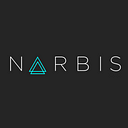
At-home neurofeedback devices for visualizing and training neurophysiological activity are flourishing. Years of research show that you can learn to control your brain waves to help improve your mood, your focus, and performance.
Portable neurofeedback devices can measure EEG (brain waves) in combination with a wide variety of physiological signals simultaneously. There are plenty of options to choose from; how do you pick the at-home neurofeedback device that’s best for you and your family? Read on.
1. Narbis

How it works: Via dry electrodes that rest on the scalp, Narbis’s neurofeedback smart glasses analyze brain activity to detect whether the wearer is showing brainwave patterns indicative of paying attention or losing focus. When the wearer is paying attention, the glasses remain clear. When the system detects that the wearer is getting distracted, the glasses gently change tint, reminding the wearer to pay attention. With two or three 20-minute sessions a week, Narbis users can learn how it feels to pay attention during tasks that require focus. Whether it’s reading, doing homework, or getting through an art project, regular use of Narbis can help teach focus and attention.
Benefits: Narbis’s system allows users to learn how to concentrate while doing the very tasks that necessitate focus; i.e. reading, doing homework, or focusing on a craft, rather than having to interrupt the day by having to set aside time to play video games.
Narbis’s dry electrode system is revolutionary in that it does not require pastes or gels.
Moreover, Narbis allows users to access neurofeedback completely within the comfort of their own home.
2. Muse

How it works: The Muse headband uses neurofeedback training to alert the wearer about their state of attention. Muse uses sounds to alert the wearer about being distracted.
Drawback: someone who needs to focus on a task with a sound component — say virtual learning or practicing a musical instrument — wouldn’t be able to use Muse to stay on task. (Narbis smart glasses, on the other hand, gently change tint depending on the wearer’s state of focus, meaning they can teach attention regardless of the task at hand.)
3. Thync

How it works: Thync is not a neurofeedback tool. Rather, its FeelZing product is an “energy patch” that relies on non-invasive external neurostimulation as a way to coax the brain to pay attention or focus. Applied behind the ear for a seven-minute session, Thync claims wearing the patch will help the wearer gain focus and perk up for as long as four hours.
Drawback: The boost is only temporary. Moreover, the energy patches operate on external neurostimulation, rather than on neurofeedback, a field of neuroscience backed by decades of research.
How it works: Although it’s not a neurofeedback device per se, Omnipemf is based on PEMF, or Pulsed Electromagnetic Field, a school of therapy that relies on sending electromagnetic pulses to provide relief. As the maker of the tool says, the headset emits radio frequencies specific to the wearer’s desired state of mind, whether it’s focus, sleep, or relaxation. The line of thinking goes that the brain will sync with this frequency, resulting in, say, focus.
4. Omnipemf

Drawback: Omnipemf doesn’t train the brain how to focus or reach peak performance. Rather than build skills on how to focus, the headband must be worn to get into that state.
5. PlayAttention

How it works: PlayAttention uses neurofeedback to teach users how to focus and pay attention.
Drawback: PlayAttention requires users to learn to pay attention by playing video games. For example, users might learn to focus by having to make characters move across a video screen. This requires users to take time out of their day to play a video game. Narbis allows you to learn how to pay attention while reading, studying, working at a computer, or otherwise getting through your to-do list. Moreover, PlayAttention comes at a much higher price point: the home version with a two-user license is $1,795; the end-user equipment model is $2,500.
6. Hapbee

How it works: Although this device doesn’t use neurofeedback, we thought it worth including in this list given its claims to impact brain activity. The Hapbee wearable sends ultra-low radio frequency signals to the brain with the goal of achieving a given mental state such as sleep, peak performance, or socializing.
Drawback: Whereas decades of research underpins the effectiveness of neurofeedback — science based on users’ own brain activity — so that they can learn to focus and calm down throughout their day with the power of their own minds and retain those skills for life; less is known about the long-term effects of radio waves on your brain.
7. NeuroSky

How it works: NeuroSky’s MindWave Mobile 2 and Excellent Brain headsets have the user watching games and/or video to learn how to focus.
Drawback: As with other video-game based wearables, NeuroSky requires users to take time out of their day to play a game.
8. Versus

How it works: Versus’s neurofeedback headset delivers user data to create games and exercises intended to help with focus and attention.
Drawback: Users are forced to interrupt the day by having to set aside time to play video games.
9. YBrain

How it works: YBrain’s two models — one each for hospitals / medical facilities and consumers — use nodes on the scalp to give electrostimulation therapy ( electric pulses to the scalp), which the company says can help aid depression.
Drawback: YBrain doesn’t actually analyze users’ own brainwave activity to measure an individual’s mental state.
10. Myneurva

How it works: Myneurva’s neurofeedback system consists of an electrode cap, which requires application of gel to the scalp before use, which can be messy and uncomfortable — especially for people prone to sensory overload.
Drawback: Myneurva requires the purchase of package sessions for use, the cheapest of which is $3,599, all of which require at least one in-person meeting with a practitioner.
Originally published at https://narbis.com on June 16, 2021.




